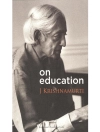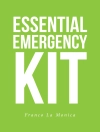As educators we all recognise the power of using data to inform our work. A key piece that is often missing is how we engage students in their data story.
When we use data with students they become data-informed learners. They have a better understanding of their ability as a learner and can articulate their goals and challenges more clearly. We can support our students through targeted conversations, working in partnership to help them improve.
There are three main purposes for using data with students: goal setting, learning dispositions or behaviour, and the quality of student learning or understanding. There are five main modes by which we do this: data walls, success criteria, student-generated assessment, deliberate conversations and data on walls in classrooms.
In this book, Dr Selena Fisk unpacks these purposes and modes, giving practical ideas for implementation in schools and classrooms. She offers guidance in having constructive data-informed conversations with students, while building a culture of psychological safety where data use is productive and transformational.
Tabela de Conteúdo
Introduction
Part 1: Why data-informed learners?
1Evidence-informed practice
Part 2: How to use data with learners
2Purpose – why we use data with students
3Mode – how we build data-informed learners
4Having conversations with students
Part 3: Data-informed learners in practice
5Intersection A: Goal setting and data walls
6Intersection B: Goal setting and success criteria
7Intersection C: Goal setting and student-generated assessment
8Intersection D: Goal setting and deliberate conversations
9Intersection E: Goal setting and data on walls
10Intersection F: Behaviour or learner dispositions and data walls
11Intersection G: Behaviour or learner dispositions and success criteria
12Intersection H: Behaviour or learner dispositions and student-generated assessment
13Intersection I: Behaviour or learner dispositions and deliberate conversations
14Intersection J: Behaviour or learner dispositions and data on walls
15Intersection K: Quality of learning and data walls
16Intersection L: Quality of learning and using success criteria
17Intersection M: Quality of learning and using student-generated assessment
18Intersection N: Quality of learning and deliberate conversations
19Intersection O: Quality of learning and data on walls
Conclusion
About the author
Acknowledgements
References
Sobre o autor
Dr Selena Fisk is a data expert and educational consultant who is passionate about helping teachers and schools sort through the numbers to tell real stories and lead positive change. Selena has mentored hundreds of school leaders, data leaders and teachers in data storytelling, which has positively impacted the students they work with. Data-informed Learners’ is her fourth book.












